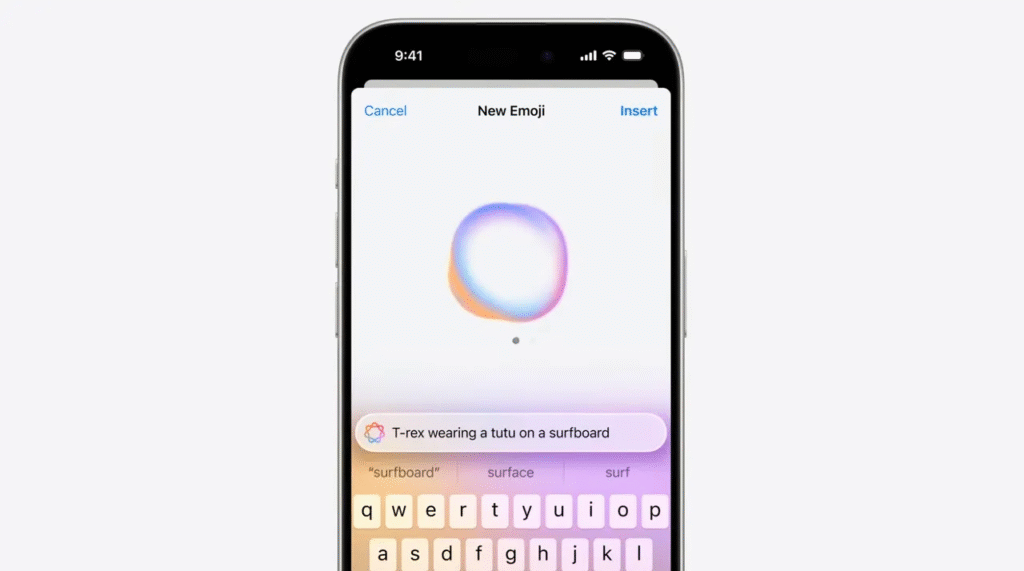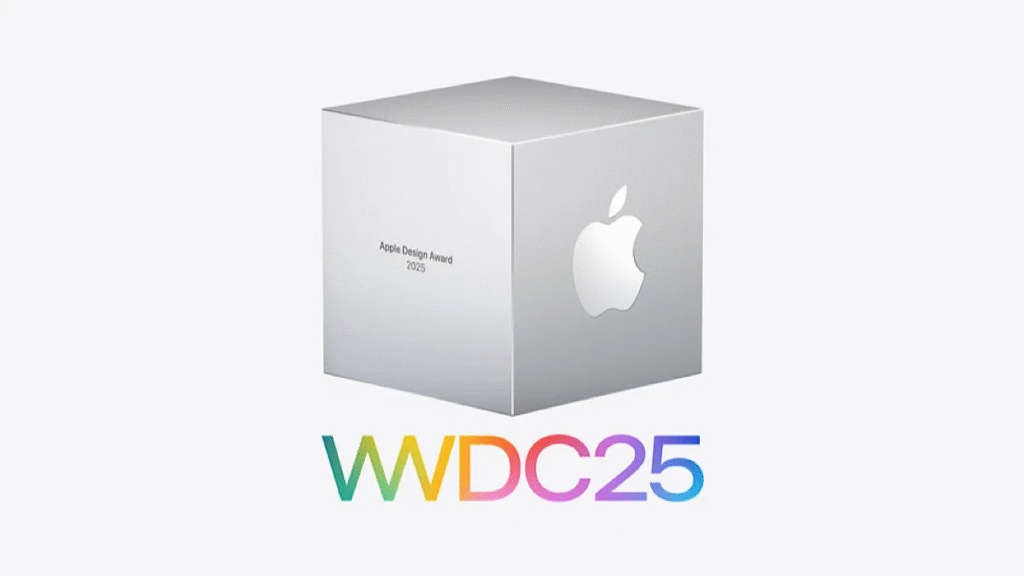June 15, 2025 | TechThrilled Newsroom
Apple’s Worldwide Developers Conference (WWDC) 2025 concluded with one of the company’s most significant announcements in over a decade—marking the formal introduction of Apple Intelligence, a proprietary suite of generative AI capabilities integrated across iPhone, iPad, and Mac devices. With a strong emphasis on privacy-focused, on-device intelligence, and the much-awaited overhaul of Siri, Apple positioned itself firmly in the AI race against rivals like Google, Microsoft, and OpenAI.
The keynote, led by CEO Tim Cook and SVP of Software Engineering Craig Federighi, introduced a wide-ranging transformation to the Apple ecosystem—one where AI doesn’t just reside in the cloud but lives securely on your device, customizing responses and tasks in real time without leaking your data to external servers.
Apple Intelligence: What Is It?

“Apple Intelligence” is Apple’s unique branding of its artificial intelligence and machine learning suite, designed to operate seamlessly across apps and devices. Unlike third-party models that heavily rely on cloud computing, Apple has focused on a hybrid on-device + private cloud architecture, where AI tasks are performed locally when possible, and securely delegated to Apple’s Private Cloud Compute when necessary.
Key Capabilities of Apple Intelligence:
- Natural Language Understanding: Summarize long emails, suggest replies, or rewrite messages in different tones.
- Image Generation & Editing: Create custom emoji-like “Genmoji” or manipulate photos via simple text commands.
- Smart Systemwide Actions: Cross-app automation, like finding a document sent by someone in a specific chat thread or pulling up flight info from emails.
- Prioritized Notifications: Alerts are automatically ranked by context, time sensitivity, and relevance.
- Semantic Indexing: Devices now understand the content inside apps, not just filenames or metadata.
It’s clear that Apple is not just adding AI features—it’s rethinking the operating system around intelligence.
Siri 2.0: A Reinvented Personal Assistant
The most groundbreaking upgrade came in the form of Siri 2.0—a total overhaul of Apple’s digital assistant, powered by Apple Intelligence and trained using both internal Apple datasets and on-device learning.
Major Improvements in Siri:
- Conversational Memory: Siri now remembers previous context from conversations and continues naturally across sessions.
- App Awareness: Siri can now execute tasks within third-party apps (e.g., “Edit this photo and send it to Mom in WhatsApp”).
- Text-Based Mode: Users can now interact with Siri through typed commands, not just voice.
- On-Screen Awareness: Siri understands what you’re looking at and offers contextual suggestions.
- Developer Integration: A new SiriKit allows developers to hook deeper into Siri’s capabilities.
Craig Federighi emphasized that Siri is now “finally useful in ways we always wanted it to be—nuanced, conversational, and powerful.”
Genmoji and AI Images: Fun Meets Function

Apple is also joining the generative imagery wave with features like Genmoji, which lets users create emojis by describing them in plain language. Whether it’s “a dancing pineapple wearing sunglasses” or “a robot sipping coffee,” Genmoji will render the idea and insert it in iMessage or Notes.
Additionally, the Photos app now supports AI editing tools:
- Background replacement
- Subject enhancement
- Object removal
- Intelligent tagging and search
This marks a significant leap toward user-friendly creativity, rivaling tools like Adobe Firefly and Canva.
Writing Tools: Summarize, Rewrite, and Correct Across the OS
Apple Intelligence integrates advanced language tools into all text-related apps:
- Mail can summarize email threads or suggest a polite response.
- Notes supports audio-to-text transcription with AI-powered summaries.
- Safari now includes an “intelligent highlights” feature to summarize web pages.
- Pages has built-in tone adjustment and grammar suggestions powered by AI.
Notably, Apple Intelligence doesn’t offer features like AI story generation or creative writing the way ChatGPT does—it’s intentionally focused on productivity, utility, and user control.
Privacy at the Core: Private Cloud Compute
Apple’s major differentiator in the AI space is its unwavering focus on privacy. While services like ChatGPT or Gemini rely on centralized data handling, Apple introduced Private Cloud Compute (PCC), a secure backend architecture that processes user data without storing it or linking it to Apple IDs.
Features of PCC:
- Data is ephemeral, used only during the computation session.
- Codebase is auditable, and Apple pledges to publish PCC software stacks for public review.
- Servers are Apple Silicon-based, maintaining on-device grade security.
In Tim Cook’s words: “We don’t want your data, and we built the system to prove it.”
Device Compatibility and Rollout
Apple Intelligence will roll out gradually starting Fall 2025, and is compatible with:
- iPhone 16 Pro and later (A18 Pro chip required)
- iPad Pro (M1 or later)
- MacBook Air/Pro with M1 chip or later
This high hardware threshold means older iPhones and entry-level devices won’t support these features—a move some have criticized as exclusionary, but Apple defends it based on on-device processing requirements.
Developer APIs and App Ecosystem Expansion
Apple opened new APIs for developers to integrate their apps with Apple Intelligence:
- App Intents allow developers to declare specific tasks their app can perform in response to Siri or system commands.
- Genmoji SDK lets apps suggest user-generated emoji as part of chat or collaboration.
- Notification Prioritization API helps filter and schedule alerts intelligently.
Apple is banking on the developer community to build the next generation of AI-powered apps that feel native, not bolted-on.
What About ChatGPT? Apple’s Strategic Partnership
In an unexpected twist, Apple announced a deep integration with ChatGPT inside Siri and Writing Tools. Users can opt-in to invoke ChatGPT-4.5 Turbo for more expansive, creative tasks.
Siri might say: “I can answer that using ChatGPT—do you want me to proceed?” before sending anonymized queries to OpenAI. This dual-engine model allows Apple to retain control and privacy, while giving users access to a more generalist AI brain when needed.
Importantly, ChatGPT usage doesn’t require an OpenAI account and is free at launch, although paid features (like image generation) will be restricted to ChatGPT Plus subscribers.
This partnership reflects Apple’s pragmatic approach: Apple Intelligence for secure and deterministic tasks, ChatGPT for creative or exploratory queries.
WWDC 2025 Takeaway: Apple Enters the AI Wars With a Human-First Vision

WWDC 2025 will be remembered not just for launching a new Siri or adding AI tools—but for redefining what AI looks like when it’s embedded responsibly within everyday computing.
Apple made it clear that it is not trying to compete with ChatGPT or Gemini in terms of pure model size or general-purpose reasoning. Instead, Apple Intelligence is about smart assistance rooted in context, privacy, and seamlessness.
Key Differentiators:
- Full on-device processing for common tasks
- A redesigned, conversational Siri
- Developer hooks for app-specific intelligence
- ChatGPT integration without surrendering user identity
- Emphasis on privacy, auditability, and opt-in behavior
The Road Ahead
With Apple Intelligence, Apple has re-entered the AI race with a distinct philosophy: enhance the user experience without compromising trust. Whether consumers embrace this hybrid approach over flashier AI tools from competitors remains to be seen.
But what’s clear is that Apple’s new suite is not a side-feature—it’s the foundation for the next generation of iOS, iPadOS, and macOS. The company has set a new bar for ethical, secure, and useful AI deployment across consumer tech.
Developers, consumers, and enterprise buyers alike will now watch closely to see whether Apple’s walled garden of intelligence can flourish in an increasingly open AI ecosystem.
